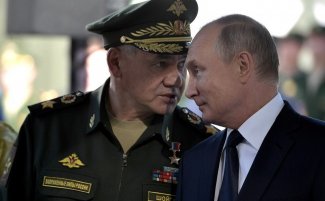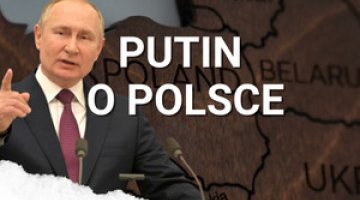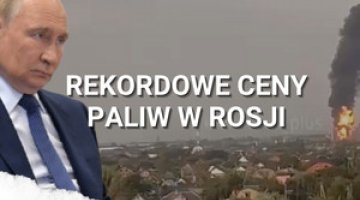Troops withdrawing? Russian forces still on Ukraine’s borders

On 22 April, the so-called active phase of the combat readiness test of the Southern and Western Military Districts (MDs) being held at military training grounds in Crimea and the surrounding waters reached its final stage. A total of 10,000 soldiers, 1200 heavy weapons and military equipment, over 40 combatants and 20 auxiliary ships were involved in the latter project. This accounted for around 10% of the total forces deployed under the so-called unannounced readiness test of the Russian Armed Forces in the regions bordering Ukraine and the occupied territories which had been conducted since March.
On the same day, Russia’s defence minister Sergei Shoigu stated that the subunits involved in the test would begin withdrawing to their permanent locations on 23 April. Over the following days, tactical battalion groups of Airborne Forces (the 76th Air Assault Division and the 98th Airborne Division of the Western MD, and the 7th Air Assault Division of the Southern MD), as well as the 58th Combined Arms Army (CAA; Southern MD), and around 50 aircraft and helicopters of the 4th Air and Air Defence Army (Southern MD) were withdrawn from Crimea. 20 ships of the Black Sea Fleet also returned to their bases.
The soldiers of the 41st CAA’s battalion tactical groups (from the Central MD) are also returning from the units deployed outside Crimea to their permanent locations, although (as Shoigu pointed out) their weapons and military equipment will remain in the field armament depots at the Pogonovo training ground in the Voronezh region. This is because they are planned to participate in the Zapad-2021 exercises. The first trains with subunits returning from the exercises arrived at their units on 26 April, and the return to barracks should be completed by 1 May.
Also on 26 April, the daily Izvestia published a report from the Russian Ministry of Defence about the commencement of the formation of a second large tactical level unit, the 20th Mechanised Division, within the 8th CAA (Southern MD). On 27 April Minister Shoigu, speaking at the meeting of defence ministers of the CIS’s Organisation for Collective Security in Dushanbe, described Russia’s military actions as a necessary response to NATO’s alleged military aggression and the expansion of Alliance forces on its eastern flank.
Commentary
- The media’s labelling of the Russian troop movements after the completion of the combat readiness test as a ‘withdrawal’ should be regarded as imprecise at the very least. Only around 10% of the total forces deployed there and in the occupied territories (mainly in Crimea) have actually withdrawn from the border with Ukraine as part of the above-mentioned test. 90% of the original military potential remains in the vicinity of Ukraine’s borders and in Crimea, as these are their permanent locations. In the case of first-line formations, the 150th MechDiv from the 8thCAA and the 3rd MechDiv and 144th MechDiv from the 20th CAA (Western MD) are only located about 50 km from the Ukrainian border. For this reason, the concept of ‘troop withdrawal’ should be seen as nothing more than part of a media effort to reduce tensions, and not as an actual military move. Considering the military situation in the region as it has been shaped since 2014, the best that can be said is that the level of combat readiness has decreased, and the size of the Russian Armed Forces groupings targeted at Ukraine and the occupied territories (along with the forces of the so-called separatists) remains at the level of around 150,000 soldiers.
- Russia still intends to exploit the military tension it has created on the border with Ukraine, as shown by the fact that the equipment transferred there as part of the 41st CAA subunits test remains in the field armament depots in Voronezh oblast. On the scale of the entire exercise, the group delegated by the Central MD was insignificant (numbering 4000 soldiers at most), but the involvement of the Siberian units proved to be important in the parallel information war. We should assume that they will also be used in the coming months – depending on the situation at the time – and not just in connection with the Zapad-2021 exercises planned for this September. From a military point of view, the covert transfer of soldiers from Siberia – given that their weapons are already stored on the spot – does not pose a problem. It cannot be ruled out that additional battalion tactical groups from the Central MD will be sent to the western regions of Russia in preparation for the Zapad-2021 exercises. It will be much easier and less noticeable to transfer them as part of the Russian army’s manoeuvres during the summer training period (especially in July and August).
- The commencement of formation of the 20th Mechanised Division in the eastern part of the 8th CAA (Volgograd-Kamyshin)’s area of responsibility should be considered as the crowning of the process of establishing this operational unit (i.e. the 8th CAA). Given that the new division will be built on the basis of the existing 20thMechanised Brigade (Volgograd), the actual impact potential of the 8th CAA will increase by 3 regiment/brigade level units (after a total of 12 additional tactical battalion groups are deployed) and an artillery regiment. The garrison facility in Kamyshin will make it easier to form the 20th Division (the 56th Air Assault Brigade, which has been deployed there so far, will become part of the 7th Air Assault Division, and will be redeployed to Feodosia in Crimea). The formation of the 20th MechDiv places further emphasis on the importance of the European theatre of war in Russian strategic planning. The new 8th CAA division will be the ninth general military division to be established in the western direction since the Russian Armed Forces began expanding in 2013. During the same time, only one unit of this level has been formed in the eastern direction.
- Publicising the combat readiness test of the Russian Armed Forces, especially those aspects of it which have directly fuelled Russia’s relations with the West, is part of the media operation that has been carried out for over a decade. Within it, Moscow has been trying to present its own military activities as defensive undertakings, forced upon it by the alleged increase in NATO’s military presence and hostile activity on the country’s borders. In the recent speeches by Minister Shoigu and other representatives of the highest state authorities, NATO’s Defender Europe 2021 exercises have been deemed the primary military threat to the Russian Federation. Despite the fact that (unlike the similar undertaking in 2020) they are mainly focused on the southern part of the continent, in Russia’s view any allied (meaning American) military activity in Europe constitutes a direct military threat to it. It should be assumed that such activity – regardless of its scale and nature – will be used to justify the actions of the Russian army on the continent in the so-called summer training period (starting on 1 June), especially during the Zapad-2021 exercises.





